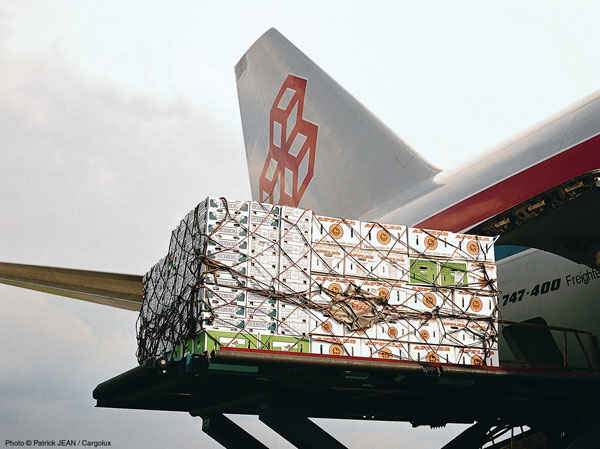

 |
 |
|
| |
||

 The
Luxembourg-based all cargo airline reports revenues of 1.4 billion USD for 2005–an
increase of 18 percent compared to the previous year.
The
Luxembourg-based all cargo airline reports revenues of 1.4 billion USD for 2005–an
increase of 18 percent compared to the previous year.
“We’ve offered the market an additional
capacity of 18 percent last year which we were able to completely sell to our
customers,” reports Uli Ogiermann, German-born helm of Cargolux (CV),
during a recent meeting in Hamburg, Germany.
Expected Cargolux profit of something between
58 to 60 million USD trails 2004’s result by about 20 million US dollars.
Exact figures for fiscal 2005 will be presented
later in Spring ‘06 during the carrier’s annual conference in Luxemburg.
Main reason for the profit decline is the high
soaring fuel price, says Ogiermann.
“We had to pay an additional 170 million
USD last year on kerosene.”
Presently the freight carrier’s fleet comprises
14 Boeing 747-400F, which average an age of six years.
Freighter number fifteen, which is a converted
pax aircraft of Korean’s Asiana and the first ex-passenger plane CV has
ever purchased, will join the fleet at the end of this year.
Since the carrier wants to keep outpacing the
market in the years to come with continuous double-digit growth rates annually,
Ogiermann revealed plans to phase in two additional B747-400Fs until 2009.
By then the world’s eighth biggest cargo
airline will receive its first B747-8F out of a total order of ten plus ten
options for this brand new freight plane Boeing is offering the market.
“We are the launch customer of this aircraft.
“That’s why we were able to influence the shaping and the performance
of the B747-8F according to our specific needs, after we finally had convinced
Boeing to build the freighter,” the CEO says.
The aircraft, which can carry up to 140 tons,
will lift the overall capacity of CV dramatically while decreasing fuel costs,
since it consumes 17 percent less compared to the -400F.
“We also considered buying the A380F, but
after thorough investigations we decided to place the Boeing order, mainly due
to economic reasons,” explained Ogiermann.
In fact CV is serving quite a lot of airports
worldwide that lack the necessary infrastructure and are not compatible for
the A380F, such as Petrolina/Brazil, Kinshasa/Congo and Latacunga/Ecuador.
“We would love to have a mixed fleet of
Boeing and Airbus freighters to serve trunk routes as well as secondary lanes,
but unfortunately we cannot afford to finance this venture.”
According to Ogiermann the political tendency
to increasingly impose night flight bans on European airports is a big mistake.
Compared to China and the Far East with rapid
airport expansion programs, shutting down of European airports during the night
hours is a growing competitive disadvantage and high obstacle for European carriers.
“Because of the curfew at Luxembourg airport
between midnight and six o’clock in the morning we have to store some
of our freighters for hours in the Middle East before they can depart to Luxembourg-Findel.”
This happens to be extremely unproductive and
thus costly.
One possibility to circumvent this problem is
to build regional sub-hubs at places with a high throughput of airfreight, like
CV did at Milan’s Malpensa airport.
As far as the ownership structure is concerned
Ogiermann pointed out that there are “at least ten candidates worldwide”
to acquire the stake of 33.7% formerly held by bankrupt Swiss SAir Lines (Swissair),
which has been bought back by financial investors in Luxembourg.
“We are evaluating the market to see which
applicant fits our needs and which doesn’t,” says Ogiermann.
This decision will take time and not be completed
within the next months.
(Heiner Siegmund)